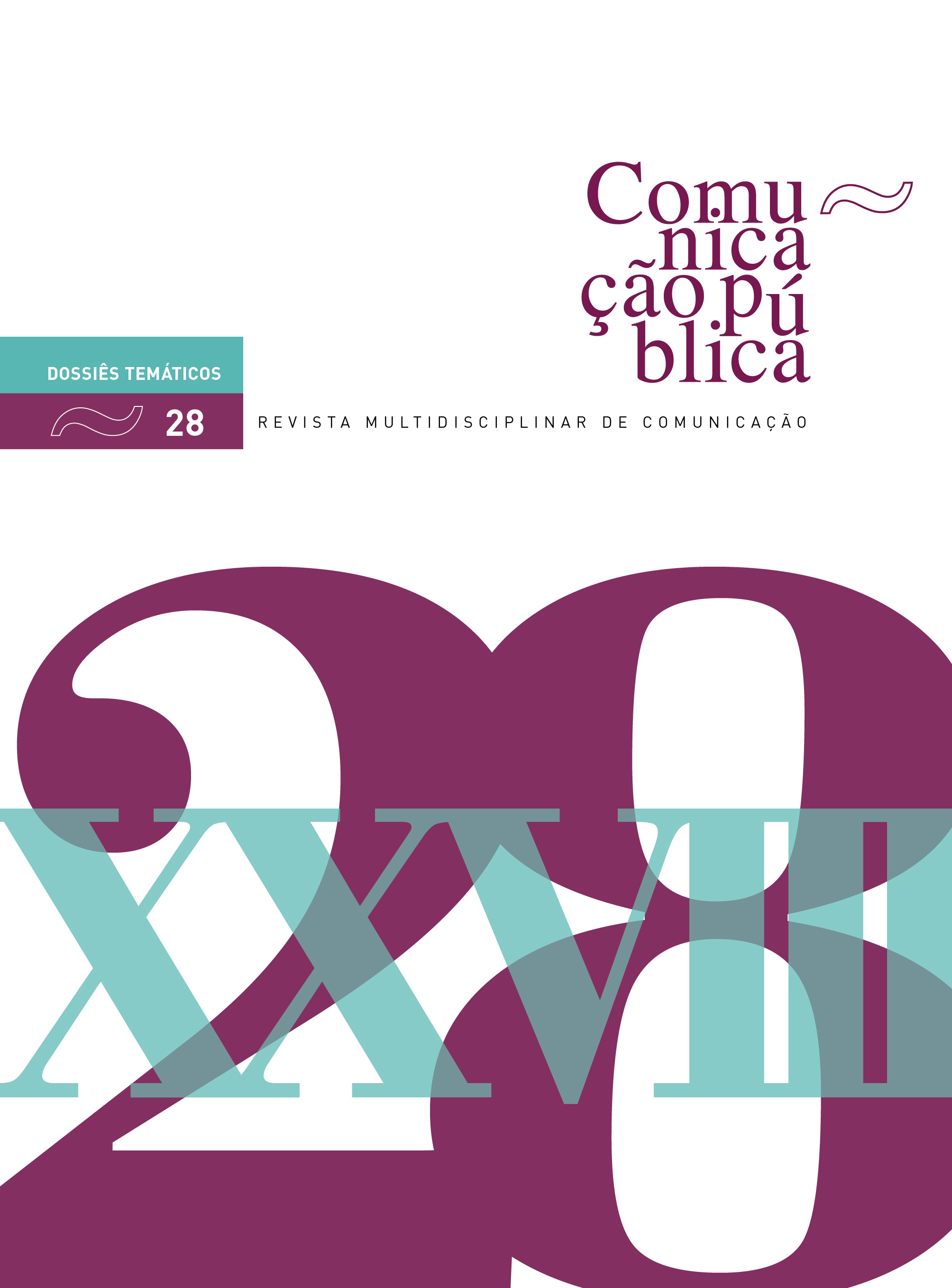Nonverbal Communication in Tourism. The case of a 5 * hotel in Sintra
DOI:
https://doi.org/10.4000/cp.7548Keywords:
omnichannel communication, hospitality, nonverbal communication, tourism, customer serviceAbstract
This article aims to add knowledge about nonverbal communication (CNV) and its influence on tourism using the case study of a 5* hotel in Sintra. Studies show the need to apply correct communication to obtain the best results in terms of hospitality, however the references and rationale about CNV are little detailed. The objectives are to understand how CNV elements are applied to Front Office (FO) service; if there is and what is the training at the hotel about CNV; the perception that both employees and managers have about the use of CNV elements. The investigation has a qualitative nature. Information collection was based on bibliographic data and information collected at the hotel. The results presented are based on the direct observation made in the FO as well as the responses obtained to semi-structured interviews. Despite having a short training for direct interaction with the guest/client, the employees commit to apply the NVC, by using a professional smile and eye contact.
Downloads
References
André, E., Bevacqua, E., Heylen, D., Niewiadomski, R., Pelachaud, C., Peters, C.E., Poggi, I., & Rehm, M. (2011). Non-verbal persuasion and communication in an affective agent. In R. Cowie, C. Pelachaud, & P. Petta (Eds.), Emotion-oriented systems (pp. 1-17). Berlin-Heidelberg: Springer Berlin Heidelberg.
Bardi, J. A. (2003). Hotel front office management. New Jersey: John Wiley & Sons.
Berger, C. R., Roloff, M. E., & Ewoldsen, D. R. (Eds.). (2010). The handbook of communication science. London: Sage.
Bryman, A. (2015). Social research methods. Oxford: Oxford University Press.
Burgoon, J. K. (1993). Interpersonal expectations, expectancy violations, and emotional communication. London: Sage. DOI : 10.1177/0261927X93121003
Burgoon, J. K., Guerrero, L. K., & Manusov, V. (2011). Nonverbal signals: The SAGE handbook of interpersonal communication. London: Sage.
Campos, P. (2010). Manual de técnicas de operações turísticas e hoteleiras (Vol. 1). Lisboa: Turismo de Portugal.
Conville, R. L., & Rogers, L. E. (Eds.). (1998). The meaning of" relationship" in interpersonal communication. Connecticut: Greenwood Publishing Group
Cooper, C., & Hall, C. M. (2008). Contemporary tourism: An international approach. Oxford: Routledge.
Creswell, J. W. (2013). Research design: Qualitative, quantitative, and mixed methods approaches (2ª ed.). London: Sage publications.
Cunha, L., &Abrantes, A. (2013) Introdução ao turismo (5ª ed.). Lisboa: Lidel.
Espírito Santo, P. (2010). Introdução à metodologia das ciências sociais. Lisboa: Edições Sílabo.
FFMS (2020). Estabelecimentos turísticos: total e por tipo de estabelecimento. PORDATA - Estatísticas, gráficos e indicadores de Municípios, Portugal e Europa. Disponível em: https://www.pordata.pt/Portugal/Estabelecimentos+hoteleiros+total+e+por+tipo+de+estabelecimento-2562-211752 (consultado 22 janeiro 2018).
Fisher, B. A., & Adams, K. (1994). Comunicação interpessoal: Pragmática das relações humanas (2ª ed.). New-York: McGraw-Hill.
LittleJohn, S. (1982). Fundamentos teóricos da comunicação humana. Rio de Janeiro: Zahar Editores.
Lusa (2017, 31 maio). OMT: Portugal está a tornar o Turismo num "pilar de crescimento socioeconómico". Jornal de Negócios. Disponível em: http://www.jornaldenegocios.pt/empresas/turismo---lazer/detalhe/omt-portugal-esta-a-tornar-o-turismo-num-pilar-de-crescimento-socioeconomico (consultado 26 novembro 2017).
Mehrabian, A. (1969). Significance of posture and position in the communication of attitude and status relationships. Psychological Bulletin, 71(5), 359-372. DOI : 10.1037/h0027349
Myllyneva, A., & Hietanen, J. K. (2015). The dual nature of eye contact: To see and to be seen. Social cognitive and affective neuroscience, 11(7), 1089-1095. DOI : 10.1093/scan/nsv075
Ottenbacher, M. C. (2007). Innovation management in the hospitality industry: Different strategies for achieving success. Journal of Hospitality & Tourism Research, 31(4), 431-454. DOI : 10.1177/1096348007302352
Page, R. A., & Balloun, J. L. (1978). The effect of voice volume on the perception of personality. The Journal of Social Psychology, 105(1), 65-72. DOI : 10.1080/00224545.1978.9924091
Peyró, C. F. (2008). La importancia de la comunicación no verbal en la configuración de la imagen corporativa. ICONO 14 - Revista de Comunicatión y Nuevas Tecnologias, 11, 1-20.
Ribeiro, R. B. (coord.) (2016). Marketing - do conhecimento à decisão. Lisboa: Causa das Regras.
Rodero, E. (2012). A comparative analysis of speech rate and perception in radio bulletins. Text & Talk, 32(3), 391-411. DOI : 10.1515/text-2012-0019
Sim-Sim, I. S. (1998). Desenvolvimento da linguagem. Lisboa: Universidade Aberta.
Sousa, J. P. (2006). Elementos de teoria e pesquisa da comunicação e dos media (2.ª ed.). Porto: Edições Universidade Fernando Pessoa. Disponível em: http://www.bocc.ubi.pt/pag/sousa-jorge-pedro-elementos-teoria-pequisa-comunicacao-media.pdf (Consultado novembro de 2017)
Sundaram, D., & Webster, C. (2000). The role of nonverbal communication in service encounters. The Journal of Services Marketing, 14(5), 378-389. DOI : 10.1108/08876040010341008
Tavares, C. R. (2016). A comunicação personalizada na grande distribuição: A perceção do consumidor (Tese de Doutoramento não publicada). Instituto Superior de Ciências Sociais e Políticas, Universidade de Lisboa, Lisboa, Portugal.
Wang, Z., Mao, H., Li, Y. J., & Liu, F. (2016). Smile big or not? Effects of smile intensity on perceptions of warmth and competence. Journal of Consumer Research, 43(5), 787-805. DOI : 10.1093/jcr/ucw062
Yebra, M. R. (2017, 4 dezembro). Portugal, el milagro económico del país que desafió la austeridad. La Nacion. Disponível em http://www.lanacion.com.ar/2088176-portugal-el-milagro-economico-del-pais-que-desafio-la-austeridad (consultado 18 dezembro 2017).
Downloads
Published
Issue
Section
License
Copyright (c) 2020 Direitos do Autor (c) 2020

This work is licensed under a Creative Commons Attribution-NonCommercial 4.0 International License.
Os conteúdos da Comunicação Pública estão licenciados com uma licença Creative Commons - Atribuição-NãoComercial 4.0 Internacional.


